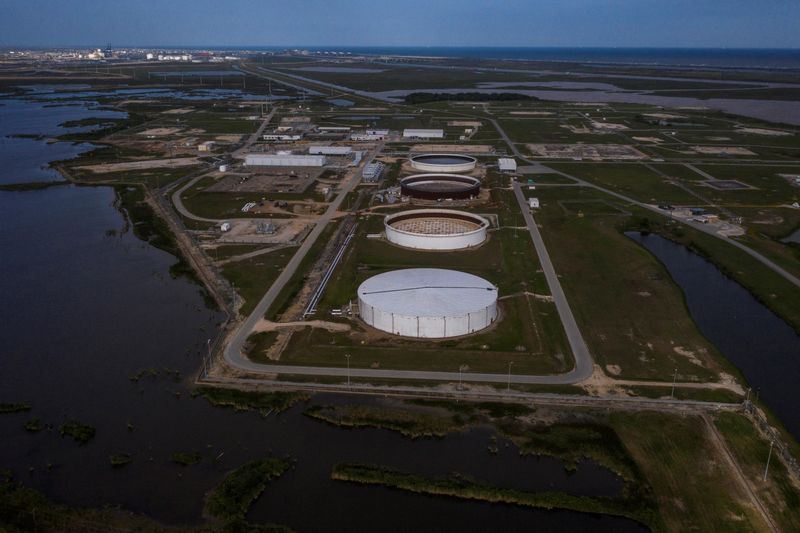Commodities
Oil steady as investors weigh up extended OPEC+ supply cuts

By Natalie Grover
LONDON (Reuters) -Oil prices were little changed on Monday as investors digested the complex deal brokered by producer group OPEC+ to extend various layers of output cuts, much of them into 2025.
futures for August delivery were down 9 cents at $81.02 a barrel by 1209 GMT. U.S. West Texas Intermediate (WTI) crude futures for July delivery slipped 14 cents to $76.85.
The Organization of the Petroleum Exporting Countries and allies led by Russia, together known as OPEC+, are currently reducing output by a total of 5.86 million barrels per day (bpd), equating to about 5.7% of global demand.
The group agreed on Sunday to extend much of its cuts well into 2025 to support the market in the face of softer than expected demand growth, protracted high interest rates in key Western economies, worries over slow demand growth in top oil importer China and rising non-OPEC production.
The deal includes extending 3.66 million bpd of cuts that were due to expire at the end of 2024 until the end of 2025.
It also prolongs 2.2 million bpd of voluntary cuts that were to expire at the end of this month but will now be kept in place until the end of September before they are phased out gradually by September 2025.
“Clearly the challenge for the group will be to hold or cut back if demand doesn’t prove as robust and we believe their strong cohesion should allow for greater flexibly, if needed,” J.P. Morgan analyst Christyan Malek said.
Some analysts described the group’s decision as incrementally bearish for oil prices, given it was always planned that the 2.2 million bpd of extra cuts would be unwound gradually.
“The communication of a surprisingly detailed default plan to unwind extra cuts makes it harder to maintain low production if the market turns out softer than bullish OPEC expectations,” Goldman Sachs analysts said.
These eight core members account for only about 30% of global oil output, making it harder for the group to convince markets that it is able to support prices when the proportion of output it has effective control over is limited, said Callum Macpherson, head of commodities at Investec.

“Even achieving this (deal) has come at the cost of agreeing to output increases in 2025 on top of its plan to unwind the voluntary cuts. It is not clear the additional supply will find a home next year,” he said.
The front-month contract for Brent, for instance, has fallen by a few dollars since Reuters first reported such an OPEC+ deal was in the works last week.
Commodities
Oil prices rise; U.S. crude inventories plunge, Russia-Ukraine truce eyed
Commodities
India’s Reliance to stop buying Venezuelan oil over US tariffs, sources say
Commodities
Oil prices climb on Venezuela supply worries

 Forex3 years ago
Forex3 years agoForex Today: the dollar is gaining strength amid gloomy sentiment at the start of the Fed’s week

 Forex3 years ago
Forex3 years agoUnbiased review of Pocket Option broker

 Forex3 years ago
Forex3 years agoDollar to pound sterling exchange rate today: Pound plummeted to its lowest since 1985

 Forex3 years ago
Forex3 years agoHow is the Australian dollar doing today?

 Cryptocurrency3 years ago
Cryptocurrency3 years agoWhat happened in the crypto market – current events today

 World3 years ago
World3 years agoWhy are modern video games an art form?

 Commodities3 years ago
Commodities3 years agoCopper continues to fall in price on expectations of lower demand in China

 Economy3 years ago
Economy3 years agoCrude oil tankers double in price due to EU anti-Russian sanctions























